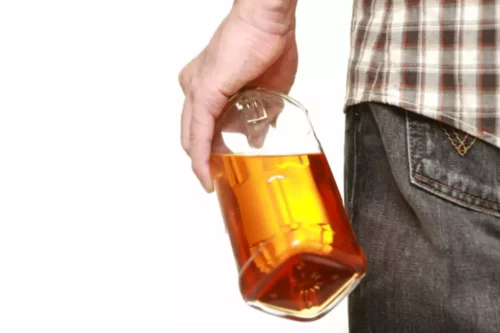
Some studies have shown promising results for naltrexone.[32][33] In contrast, others have shown a lack of appreciable effects on cravings or amphetamine use.[34][35][36] However, many of these studies were conducted on animals. There is an overall paucity of high-quality data from human subjects to base conclusions on naltrexone’s efficacy. As a result, consultation with an addiction specialist, cognitive behavioral therapy, and group therapy remain the primary means to treat amphetamine use disorder.
Challenges in Overcoming Amphetamine Withdrawal
Both amphetamine isomers have been shown to serve as positive reinforcers in animals (i.e. animals will work to get more of the drug) (Gilbert and Cooper, 1983; Risner, 1975; Yokel and Pickens, 1973). The same is true for human subjects (Smith and Davis, 1977; Van Kammen and Murphy, 1975), with the d-isomer once again being two to threefold more potent than the l-isomer (Risner, 1975; Smith and Davis, 1977; Van Kammen and Murphy, 1975; Yokel and Pickens, 1973). As indicated above, it is the combination of the rapid rate of increase and magnitude of effect that accounts for the powerful stimulant effects of amphetamine. Consistent with the mechanism described above, in vitro experiments have unequivocally demonstrated that amphetamine’s d- and l-isomers non-selectively release [3H]monoamines from preloaded slices or synaptosomes prepared from rat brain. There are experimental reports stating that d-amphetamine releases [3H] noradrenaline, dopamine and 5-HT from synaptosomes (Holmes and Rutledge, 1976; Rothman et al., 2001) and brain slices (Heal et al., 1998).
Enhancing Healthcare Team Outcomes
Under-powered results can be avoided by planning recruitment for high attrition rates, collaborating on multi-centre research, potentially through clinical research networks, and a greater role for consumer and clinician engagement in the planning and establishment of trials. Medication adherence also needs to be better examined and monitored in trials, particularly when using medications with abuse liability (e.g. psychoactive medications such as stimulants). Finally, because of the similarities in chemical structure and behavioural, psychological and physical effects of AMPH and MA [84], we have included studies of AMPH and MA, and studies that did not distinguish between AMPH and MA. MA and AMPH may be knowingly or unknowingly consumed or co-consumed in uncertain concentrations, with variability over time and place. However, there is little data on which to assess whether there are distinct differences in use disorders due to these two substances; further assessment is required.
What are the symptoms of amphetamine dependence?
- Because amineptine has similar mechanism of actions as amphetamines, it was put forth that amineptine could help to relieve amphetamine withdrawal symptoms.
- Thus, enhanced catecholaminergic signalling is the primary mediator of amphetamine’s efficacy in ADHD and narcolepsy.
- The intoxicating effects of methamphetamine can also alter judgment and inhibition, which may lead people to engage in unsafe behaviors.
- In some cases, abusers indulge in a form of bingeing known as a “run,” forgoing food and sleep while continuing abuse for up to several days.
- Prescription amphetamine drugs such as Adderall, Ritalin, and Dexedrine, are Schedule II drugs.
The authors acknowledge the contributions of Natalie Castalanelli, Nicolas Hoy and Lucy Tran to assisting with the search, data extraction and editing. NDARC is supported by funding from the Australian Government Department of Health under the Drug and Alcohol Program. LD is supported by an NHMRC Senior Principal Research amphetamine addiction Fellowship and the National Institute of Health (NIH) National Institute on Drug Abuse (NIDA) grant (R01DA ). CC is funded by an Australia Government Research Training Program Scholarship (PhD) at the University of Western Australia. We thank Richard Lowry and Carina Capra who provided data needed for the meta-analyses.

The estimated annual prevalence of a stimulant use disorder involving amphetamines is 0.2 percent among U.S. adults, according to the DSM-5. Methamphetamine was developed early in the 20th century from its parent drug, amphetamine, and was used originally in nasal decongestants and bronchial inhalers. Methamphetamine causes increased activity, decreased appetite, and a general sense of well-being. After the initial rush, there is typically a state of high agitation that in some individuals may lead to violent behavior. Identifying addiction isn’t always easy and it’s best to leave diagnosis to healthcare professionals.
Can you list the types of amphetamines?

While its behavioral and physiological effects are similar to those of cocaine, there are some major differences in the basic mechanisms of how these drugs work at the cellular level. But methamphetamine, like cocaine, results in an accumulation of the neurotransmitter dopamine, which appears to produce the stimulation and feelings of euphoria experienced by the user. Methamphetamine has a much longer duration of action and a larger percentage of the drug remains unchanged in the body. This results in methamphetamine being present in the brain longer, which ultimately leads to prolonged stimulant effects. Outpatient treatment for amphetamine addiction can be a beneficial option for people who are unable to commit to an inpatient stay or who have less severe addictions. You live at home with a strong support system and commute to a treatment facility multiple days a week for counseling and other forms of therapy.
- Physical addiction appears to occur when repeated use of a drug changes the way your brain feels pleasure.
- There were 31 comparisons for any use of amphetamines and 30 for amphetamine use disorders.
- Based on observations that the isomers of amphetamine evoke very large and rapid increases in the efflux of dopamine and noradrenaline in the PFC and dopamine in the striatum, it was predicted that these drugs would be highly effective in the treatment of ADHD.
- Synthetic cannabinoids, also called K2 or Spice, are sprayed on dried herbs and then smoked, but can be prepared as an herbal tea.
- There is no evidence that amphetamines given to children diagnosed with ADHD cause addiction or drug abuse, but there is a potential for addiction or abuse if the person taking the stimulant has a history of substance abuse.
- On the other hand, several trials have reported the superior efficacy of amphetamine in the treatment of ADHD in comparison with the non-stimulant, selective noradrenaline reuptake inhibitor, atomoxetine (Strattera®) (Biederman et al., 2006; Faraone et al., 2007; Wigal et al., 2005).
- Methamphetamine was developed early in the 20th century from its parent drug, amphetamine, and was used originally in nasal decongestants and bronchial inhalers.
- Even a few episodes of substance misuse can lead to tolerance and dependence (addiction).
Steven Shoptaw and Uyen Kao conducted the article searches, study selection, data extraction, data analysis, and write up of updated review. Keith Heinzerling provided feedback on the data analysis and assisted in writing the https://ecosoberhouse.com/ discussion section. One study was judged to be at low risk of bias and three studies were judged to be at unclear risk of bias. E. Selective outcome reporting was considered for all outcomes except for discontinuation rates.
Outlook and recovery
Lisdexamfetamine


